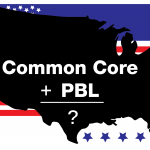
Common Core and PBL
As this new blog finds its way through the worlds of STEM education, issues of STEM equity (STEM justice), project-based learning, and school reform, it’s time for a few words about the people who are speaking here. We represent STEMbyTAF, a school transformation model authored and enacted by Technology Access Foundation (TAF) based in Seattle. We will introduce ourselves as we progress and this time it’s my turn since this post comes from my passion for the transformation of teaching and learning.
![1325109513418[1]](https://i0.wp.com/techaccess.org/wp-content/uploads/2014/04/13251095134181.jpg?resize=300%2C225&ssl=1) First, my vision of school reform is not at all about high-stakes testing or Race to the Top or teacher evaluation based on test scores. It is about personalization, student-centered classrooms, equity, and measuring what kids know and can do (not what they can memorize). The clearest expression of how I think it ought to be can be found in the 10 Common Principles of the Coalition of Essential Schools (CES) and my hero is Ted Sizer. After 32 years of teaching high school, I have spent 14 years working as a coach with schools who are trying to create places where students use their minds well and do authentic work in the service of solving relevant problems. My employers—including the Small Schools Project, CES National, CES Northwest, the School Redesign Network at Stanford, the state of Washington, and TAF—have sent me into more than 30 schools in Washington, Oregon, Utah, and North Carolina. I have been honored to work with hundreds of teachers—and occasionally some students as I still enjoy being the teacher. In fact, the best compliment ever from one of my bosses was “You are such a teacher!” Given all that, I have some things to say about the topic for this entry—the marriage between the Common Core (CCSS) and project-based learning (PBL).
First, my vision of school reform is not at all about high-stakes testing or Race to the Top or teacher evaluation based on test scores. It is about personalization, student-centered classrooms, equity, and measuring what kids know and can do (not what they can memorize). The clearest expression of how I think it ought to be can be found in the 10 Common Principles of the Coalition of Essential Schools (CES) and my hero is Ted Sizer. After 32 years of teaching high school, I have spent 14 years working as a coach with schools who are trying to create places where students use their minds well and do authentic work in the service of solving relevant problems. My employers—including the Small Schools Project, CES National, CES Northwest, the School Redesign Network at Stanford, the state of Washington, and TAF—have sent me into more than 30 schools in Washington, Oregon, Utah, and North Carolina. I have been honored to work with hundreds of teachers—and occasionally some students as I still enjoy being the teacher. In fact, the best compliment ever from one of my bosses was “You are such a teacher!” Given all that, I have some things to say about the topic for this entry—the marriage between the Common Core (CCSS) and project-based learning (PBL).
How will the Common Core State Standards align with project-based learning? The big voices of PBL have been weighing in over the last two or three years, and their answers are at Buck Institute, Edutopia, ASCD, and elsewhere. A broad-brush summary concludes that they all tend to agree—the two were made for each other. I think they are right.
First, a caveat: these folks are clear that they are talking about righteous PBL, not PBL-lite. Thom Markham, whose thoughtful delineation of what he calls “high quality PBL” as opposed to “old style ‘projects,’” is my favorite. He argues that PBL “…practices act synergistically to activate a student’s desire to learn, support growth over time, invite deeper engagement, and stimulate the reflective and critical faculties—often in a team-based, collective environment—that lead to superior solutions and analysis.” That’s a big order, but as he matches the six shifts (“moving parts,” as he calls them) of PBL to the demands of the Common Core, he make a strong case. Think about the implications of these changes: moving from instruction to inquiry; balancing knowledge and skills; going deep; teaching teamwork; establishing a culture of inquiry; and blending coaching with teaching. These are basic to PBL and you’ll find them in the CCSS, especially in the ELA standards.
One of Markham’s pieces on the subject is especially smart. In “Using PBL to Jump-Start the Common Core Standards,” he proposes an approach for those who aren’t ready or able to fully engage with all the requirements as he talks about what using “project thinking” could look like as an interim strategy. While he believes that PBL is the ultimate “how” of fully implementing the CCSS, his jump-start proposal gives it legs for beginners.
Buck Institute (BIE) hosts multiple articles and blog posts which discuss the relationship between PBL and the Common Core. Just as Markham has a gold standard model of PBL which is his reference point for his alignment commentary, BIE has its “8 essentials” which they call “main course” PBL as opposed to “dessert” projects. The two models are quite similar—not surprising as Markham used to work at BIE and was an author of their handbook. (He now has one of his own.) The BIE’s stance on CC comes primarily from editor-in-chief John Larmer and consultant Sara Hallerman. Their piece “The Role of PBL in Making the Shift to Common Core” connects 6 “big ideas” of PBL (which arise from the “8 essentials”) to specific demands of the Common Core. A blog post “What Does It Mean to ‘Align’ PBL with Common Core?” shows how a project from City Arts High School in San Francisco aligns in the areas of products, rubrics, scaffolding, text complexity, and formative assessment. There’s a video on this project (California Propositions Project) at both BIE and Edutopia if you want a deeper look. BIE also houses some CCSS-aligned rubrics on creativity and innovation, presentation, and collaboration. Look for them under “Tools.” This site is a growing collection of resources.
Edutopia contains a master list of both the items listed above and others at “Project-Based Learning and the Common Core: Resource Roundup.” The best pieces I have already mentioned. The rest is uneven. Keep going with Edutopia because it is an unending source of riches.
Their blogs are full of useful stuff. There’s a new series: “Common Core in Action” where the bloggers—many of them real teachers as opposed to professional PD people—explore the CC as it connects to creativity, communication, collaboration, and critical thinking. Here you will find many examples. Moving on, if you select “Common Core” from the list of blog tags, you will find more resources. Again, many of the writers are classroom teachers.
There’s nothing wrong with professional consultants especially if they have some years of teaching as the foundation of their resumes, but some of the best help is to be had from the immediate experience of folks in the trenches. Since most of them are too busy teaching to do much writing, their voices are harder to find. The next entry here will feature the commentary of the people who are wearing the boots on the ground and designing projects true to the goals of PBL and the Common Core.
By Pamela Wise




